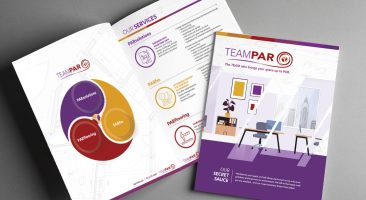Impact Statements: Nonprofit Messaging and Storytelling

Clear communication and effective marketing are important for any organization, big or small. They help define who you are to your target audience, set you apart from your competition, and entice consumers to engage with you. For nonprofits, this is especially true. Relying heavily on the generosity of others to operate, it is mission-critical for nonprofits to connect with their target audiences through simple, compelling communication.
One critical component of powerful nonprofit messaging is an organization’s impact statement. An impact statement is a phrase that describes who your organization is, what it does, and how and why you do it. It is one of the most important pieces of communication in an organization. Not only does it have to be informative, but it also must be short – the average attention span of a human lasts just 8.25 seconds[1] – and inspire your target audience to want to know more.
Even though it may sound simple, many organizations struggle to get it right. How do you craft a successful nonprofit impact statement, and how does it relate to other crucial nonprofit communication elements, like nonprofit messaging and storytelling?
What is Nonprofit Messaging?
Most nonprofits don’t start with writing their impact statement as the first thing they do when beginning their communication efforts. It’s much more effective and efficient to begin with your nonprofit messaging. When building your communication infrastructure, think of your messaging as your foundation – it’s the base that supports every communication that comes after it. Messaging is a more detailed version of what will eventually become your impact statement. It should describe who you are, what you do, how you do it (your theory of change), and the world you believe you will create when your mission is complete. It highlights your unique value and how you stand apart from others who work in a similar space.
There are many different theories on the best way to craft strategic messaging and how to structure it. Some message creators prefer to organize it based on your purpose, approach, impact, and vision statements. Others structure messaging based on the essential questions of who, what, when, where, why, and how. Still others choose a challenge, cause, and cure approach. At Paradigm, we develop it based on clients’ value propositions. Each main message point includes supporting points and data.
No matter what approach you take, your nonprofit messaging should be compelling, succinct, and be tailored to motivate your target audiences to take action.
What is Nonprofit Storytelling?
Nonprofit storytelling is just that – telling a story of the history, impact, and/or vision of your nonprofit. Storytelling is an extremely effective means of communication, and it has the science behind it to back it up. When we hear a story that elicits an emotional reaction, our brains release a dose of the neurotransmitter dopamine, which makes it easier for us to remember the information with accuracy. [2]
Storytelling is especially helpful for nonprofits to help them connect with their stakeholders. Nonprofit work can sometimes be complex and overly technical, but storytelling can help audiences understand your work and its real-life human impact.
To be most effective at your nonprofit storytelling, you should draw from your days of elementary school story time – where there are main characters with names (you can change them to protect privacy if need be!), telling details about your characters and their actions, conflict, and a resolution.
There are many different approaches you can take with your storytelling. Here are some examples of strategic stories you can craft to support your nonprofit’s mission:
- Impact: This story shows the direct impact of the work you do, with the main character being someone, or a group, your work has helped.
- Hero: Your organization can be the main character of your story and save the day.
- Foundation: This story centers around how your organization got started.
- Overcoming a challenge: Every organization faces obstacles or suffers missteps along the way. It can be very powerful to share insight into difficult times and how you got through them.
- Vision: You can paint a picture for your target audiences of the world you envision when you have accomplished your mission.
- Disaster: On the flip side, you can paint the picture of what would happen if your organization didn’t exist.
Different types of stories can meet different needs for an organization, resonate differently with various audiences, and inspire different actions.
Five Reasons Why Your Nonprofit Needs a Powerful Impact Statement
Nonprofit messaging and storytelling are each important and unique tools to support your important work. Each can inform and support your impact statement, but neither can take its place.
Here are some of the reasons it’s important for your nonprofit to have an impact statement.
- It highlights the outcome. Making the world a better place isn’t easy, and not everyone can, or needs to, understand all that goes into it. Crafting a compelling impact statement prevents you from getting too focused on the “how,” and helps you emphasize what happens because of it.
- It clarifies complexity. Even though you do it every day, it can be difficult to accurately and succinctly describe what you do in a way that helps people not only understand it, but care about it, which is especially important for nonprofits. Your impact statement can help you drill down what you do and open the language so everyone can understand it.
- It gives important details. Almost every nonprofit wants to “make a difference” and encourages their community to “make an impact” through their actions. One problem – that can entail anything and everything from providing classrooms with needed supplies to helping animals find homes. An effective impact statement can more precisely describe your work and help set you apart from others working in the same space.
- It empowers your advocates. If you can’t adequately express what you do concisely, how will your employees and advocates do it? A powerful impact statement equips your team to help raise awareness of your efforts.
How to Create a Clear Nonprofit Impact Statement
Now that you understand the value of your impact statement, how do you develop one?
- Gather information. Conduct interviews with stakeholders to inform your impact statement development. Ask open ended questions on what your organization does, its strengths/weaknesses, and unique value.
- Build your team. Convene a group of trusted advisors to aid in your writing. Be sure to include representatives from each of your critical stakeholder groups – staff, board members, volunteers, donors, advocates, etc. Make the group large enough to cover all your bases, but small enough that you can make decisions easily.
- Brainstorm. Open your discussion by sharing the information you received during your interviews, and ask others to chime in. Write down any words or phrases that resonate. Don’t worry about wordsmithing it yet. Concentrate on presenting ideas for group reaction.
- Narrow your focus. Shorten your list of ideas by circling your favorite phrases and words.
- Draft. As you craft your impact statement, remember it should be:
- Concise – some communicators recommend keeping it to 70 characters or less!
- Specific – it can’t be everything to everyone. It must reflect the most important aspects of your work.
- Written in common language – avoid using jargon or overly-technical language. If you must explain it further, it doesn’t belong in your impact statement!
- Review and refine. You may want to draft a few versions of your impact statement and get input from others. Then you can refine and finalize.
We Make Nonprofit Messaging Simple at Paradigm
There are more than 1.8 million nonprofit organizations in the United States alone[3], and that number is constantly growing. That means members of your target audiences have many, many opportunities to support an organization with their time, talents, and resources. You can’t miss a single opportunity to connect with them and stand out against your competition.
A nonprofit messaging strategy is a roadmap your business follows to ensure your communication with your target audience is consistent, accurately reflects who you are, and helps them to remember you.
At Paradigm, we have identified key elements of messaging strategy and we can help you determine what is the best messaging strategy for your organization, one that identifies who you are, your differentiators, and your value propositions – and communicate them in a way that will resonate with your audience, and clearly set you apart from your competition. Contact us today to get started.
About the Author
Kaitlyn Wilcoxson, Account Group Supervisor, is a data-driven, problem-solving marketing guru who, as one of the firm’s longest employees, has worked with almost every client Paradigm has ever partnered with, and has been instrumental in their success. Kaitlyn ensures Paradigm’s clients and internal teams are positioned for growth. She manages resources, develops team members, monitors the quality of deliverables, and manages process and procedure planning. She was awarded the Gold Level Stevie® Award for Customer Service and Sales Manager of the Year in the 17th annual Stevie Awards for Sales & Customer Service.
[1] *https://www.linkedin.com/pulse/capturing-attention-8-seconds-less-tips-tricks-success-julio-lucas#:~:text=In%20conclusion%2C%20the%20average%20human,engaging%2C%20visual%2C%20and%20interactive.
[2] https://neuroleadership.com/your-brain-at-work/the-neuroscience-of-storytelling/#:~:text=That’s%20why%20when%20we%20experience,remember%20something%20with%20greater%20accuracy.
[3] https://www.networkdepot.com/significant-positive-and-negative-nonprofit-statistics-in-2024/#:~:text=General%20Nonprofit%20Statistics&text=The%20United%20States%20has%20more,6%25%20of%20the%20US%20economy.

















 Phone:
Phone: